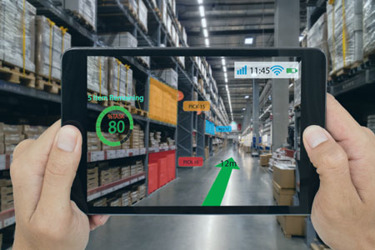Preparing For The AR Disruption In Retail
By Taras Kovalchuk, SoftServe

Immersive technologies, such as augmented reality (AR) and virtual reality (VR), bring new possibilities for retailers to interact with on-demand consumers and elevate the standard of customer engagement. Through mobile and tablet in-app experiences, consumers can virtually interact with experiential retail products, like cosmetics, furniture or home improvement goods.
AR, especially, is growing in advancement and adoption among consumers due to mobile gaming apps such as Pokemon GO. Retailers must act quickly to take advantage of this trend and leverage the benefits of AR technology to deliver value through enhanced interactions.
AR applications merge the digital and physical worlds, allowing users to overlay digital objects onto the surrounding physical environment, offering advantages to both brick-and-mortar and digital shopping experiences. Mass-scale retailers, like Ikea, Walmart, and Lowe’s are already using AR to facilitate the buyer’s journey, driving engagement and elevating customer expectations.
Retailers with plans to integrate AR into their business strategy must have three key IT elements in place: 3D content, content management system (CMS), and data infrastructure.
3D Content
The digital era has increased the level of transparency and accessible information available to the consumer. Shoppers want to research, compare and experience products, in real-time. When shopping for considered purchases such as furniture online, consumers want the reassurance of visualizing these items in their homes. However, 2D product images poorly represent the actual product, oftentimes distorting the size or color. 3D images provide consumers with true-to-life visualizations. Coupled with AR applications, these images can be overlaid onto a physical environment for a more realistic representation and a higher quality customer experience.
When visiting a product page, 82 percent of users chose to view a product in 3D, increasing overall conversion rates by nearly 30 percent. Creating 3D content is fairly accessible — retailers shoot a video of the product and then, utilizing a 3D software, convert the video to an image. Once uploaded, the URL can be embedded for web, mobile, or VR/AR applications.
Content Management System
Digital content is the cornerstone of most retail businesses—and advanced technology allows companies to leverage this content to deliver engaging and informative experiences to their customers. Content can come in many forms, but how it is organized and managed is key to ensuring omni-channel availably. A content management system (CMS) provides businesses with the storage and publishing abilities needed to deliver immersive, engaging retail experiences.
AR applications run on 3D images and interested retailers must have a CMS that can store, edit, and manage all 3D assets. Digital content storage solutions offer the ability to produce mobile and tablet applications that deliver a variety of digital product versions within an AR experience. It is advisable to choose a platform offering key metrics and insights to enjoy high-level performance analysis, content prediction, and delivery optimization.
Data Infrastructure
Lastly, the content and experience must be served to the most-relevant user, which is determined by previously captured consumer data.
Most retailers have immense amounts of data collected from loyalty programs, online and in-store purchase transactions, social media, and web analytics. However, most lack the data infrastructure to support emerging and advanced technologies. Companies know the benefits of data — trends discovery, demand prediction, experience personalization — but often lack the technology necessary to manage and leverage data.
Retailers must invest in an organized and well-maintained data infrastructure to ensure the availability, scalability, and accessibility of data for advanced technology applications. Cloud-based solutions ensure data is delivered quickly and can be accessed securely across channels. Providers, such as Google Cloud Platform (GCP) offer solutions specific to retailer needs.
Data strategy and architecture should be customized to fit the company’s requirements as the data needs, dependencies and usage may vary depending on business objectives. Once a data solution is in place, data can be aggregated and used to provide streamlined, enhanced analytics. By having a strong infrastructure, companies can optimize processes and use data insights to improve customer experiences, across channels and through immersive technology.
About The Author
Taras Kovalchuk is an XR Practice Leader at SoftServe. Taras is an expert with more than ten years of experience in software engineering, including more than five years of leadership experience. He has pioneered extended reality competence in both entertainment and enterprise solutions. Main focus areas are advocation of innovations, people development, and efficiency in operations.
